使用cv2.dnn实现GoogleNet图像分类
使用cv2.dnn实现GoogleNet图像分类
·
文章目录
1.深度学习网路模型
https://mydreamambitious.blog.csdn.net/article/details/125459959
拓展:
YOLO-V3实时检测实现:https://mydreamambitious.blog.csdn.net/article/details/125503943
YOLO-V3实时检测实现(opencv+python实现)——改进——>更加的易懂:
https://mydreamambitious.blog.csdn.net/article/details/125520487
2.GoogleNet网络模型
https://mydreamambitious.blog.csdn.net/article/details/124237000
3.下载GoogleNetcaffe模型文件
http://dl.caffe.berkeleyvision.org/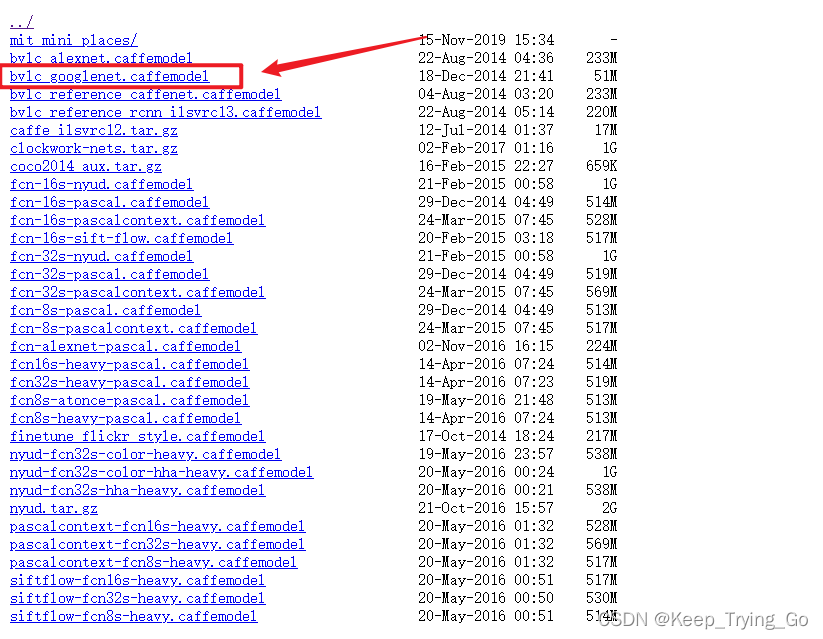
4.模型的描述文件和分类文件
注:虽然我们这里使用的python中的opencv来实现GoogleNet图像分类,可是我们需要GoogleNet模型的描述文件和分类文件,所以我们这里需要下载Opencv-3-3-0,从里面获取描述文件和分类文件:
https://www.raoyunsoft.com/opencv/opencv-3.3.0/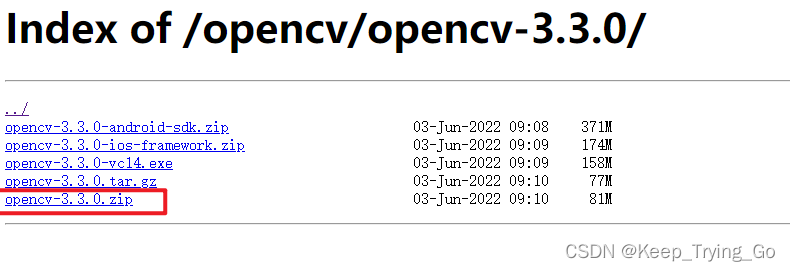
下载好Opencv-3-3-0压缩包之后,解压,打开以下路径即可找到GoogleNet描述文件和分类文件。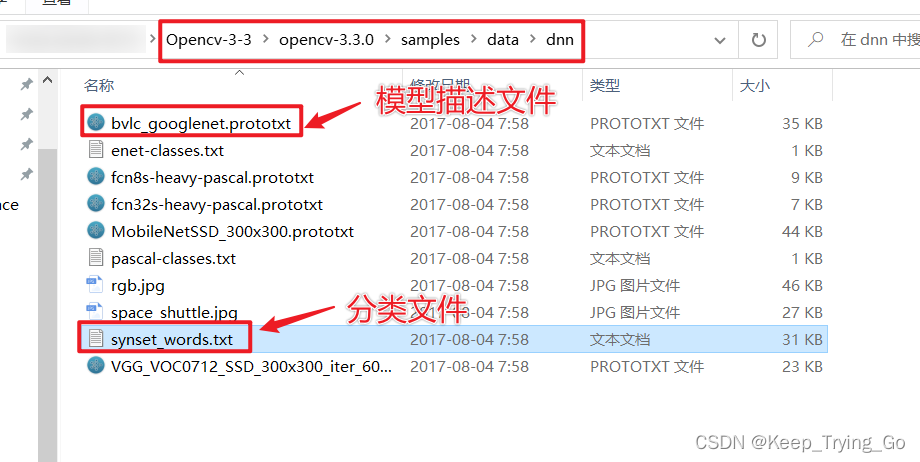
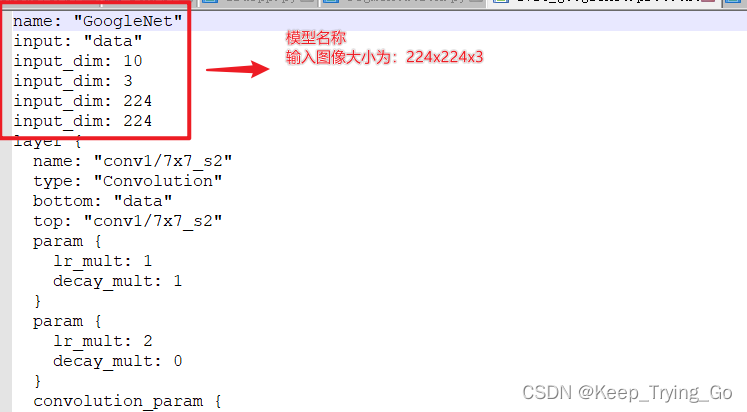
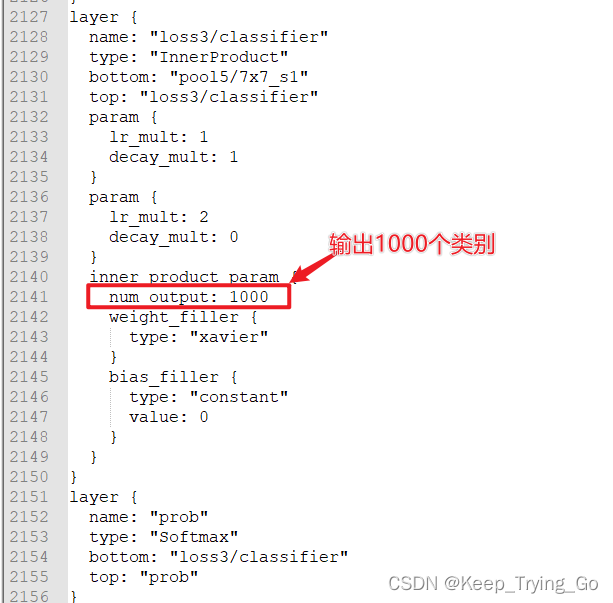
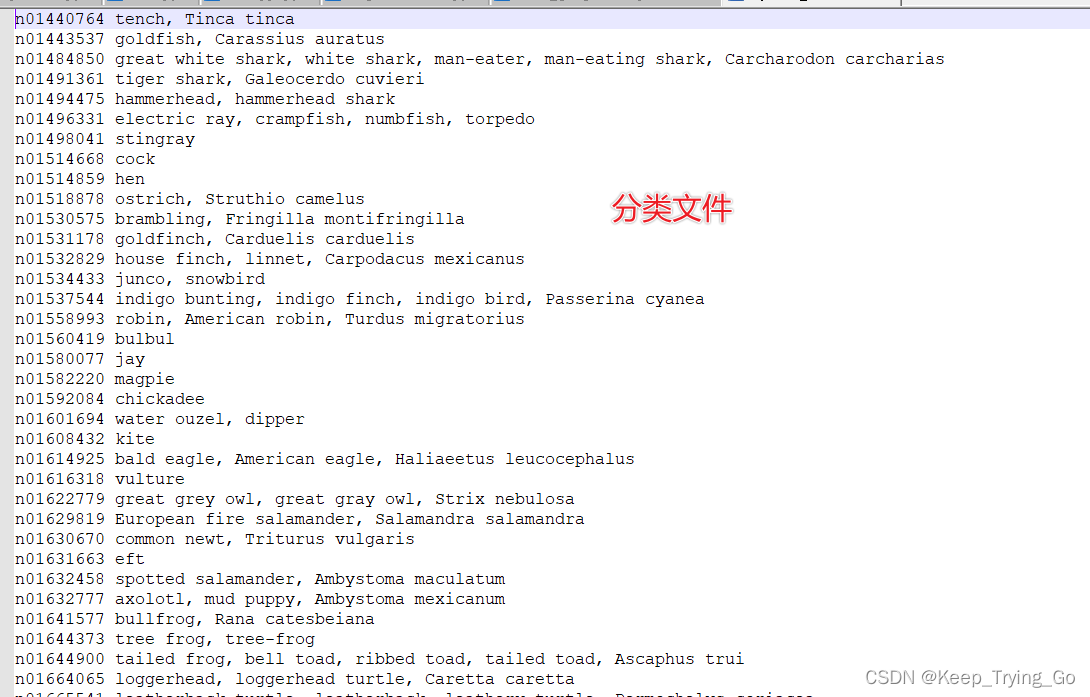
5.正文
(1)读取文件
import os
import cv2
import numpy as np
#使用Googlenet的caffe模型和描述文件
net=cv2.dnn.readNetFromCaffe(prototxt='model//bvlc_googlenet.prototxt',
caffeModel='model//bvlc_googlenet.caffemodel')
(2)读取类别文件并进行一定的处理
#读取类别文件
def readClasses():
classes=[]
with open('model//synset_words.txt','r') as fp:
readlines=fp.read().strip().split('\n')
#遍历每一行
for line in readlines:
#读取编号后面的类别名
classes.append(line[line.find(' ')+1:].split(',')[0])
# for i in classes:
# print(i)
# print(len(classes))
return classes
(3)图像预处理和网络的前向推断
def processImageForward(img):
# 对图像进行预处理
blob = cv2.dnn.blobFromImage(img, scalefactor=1.0,
size=(224, 224), mean=(104, 117, 123),
swapRB=False, crop=False)
# 图像的输入网络
net.setInput(blob)
# 进行前向推理
prediction = net.forward()
# 获取预测的概率的最大值的索引
classes = readClasses()
index = np.argmax(prediction[0])
pred_name = classes[index]
confid = round(prediction[0][index] * 100, 2)
return pred_name,confid
(4)预测单张图像并显示图像
def ClasfiferSignal():
# 读取图片
img = cv2.imread('images//6.png')
# 将图像缩放至224x224
imgSize = cv2.resize(src=img, dsize=(224, 224))
pred_name,confid=processImageForward(imgSize)
text=pred_name+': '+str(confid)+'%'
cv2.putText(img=img,text=text,org=(20,50),
fontFace=cv2.FONT_HERSHEY_SIMPLEX,
fontScale=1.0,color=(0,255,0),thickness=2)
cv2.imshow('img',img)
cv2.waitKey(0)
(5)实时检测
def detectTime():
cap=cv2.VideoCapture(0)
classes=readClasses()
while cap.isOpened():
# 读取图片
ret,frame=cap.read()
#flipCode大于0,表示水平翻转,由于opencv读取的图像和正常的是反转的
frame=cv2.flip(src=frame,flipCode=2)
#对图像的预处理及前向推断
pred_name,confid=processImageForward(frame)
text = pred_name + ': ' + str(confid) + '%'
cv2.putText(img=frame, text=text, org=(20, 50),
fontFace=cv2.FONT_HERSHEY_SIMPLEX,
fontScale=1.0, color=(0, 255, 0), thickness=2)
cv2.imshow('img', frame)
key=cv2.waitKey(1)
if key==27:
break
cap.release()
cv2.destroyAllWindows()
if __name__ == '__main__':
print('Pycharm')
# ClasfiferSignal()
detectTime()
6.检测结果

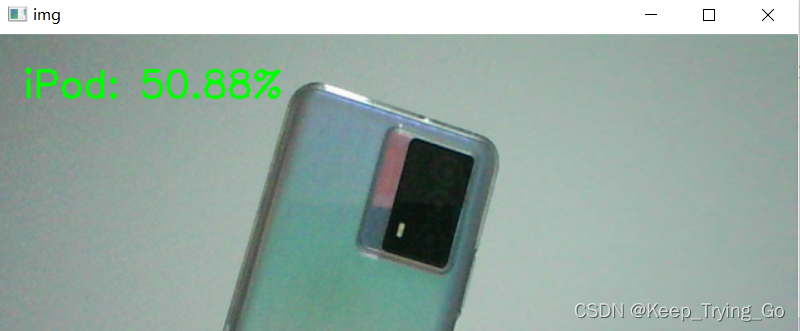
更多推荐
 已为社区贡献34条内容
已为社区贡献34条内容


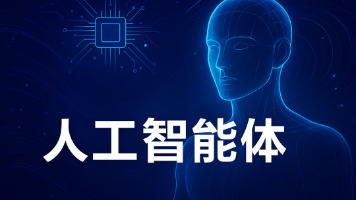






所有评论(0)